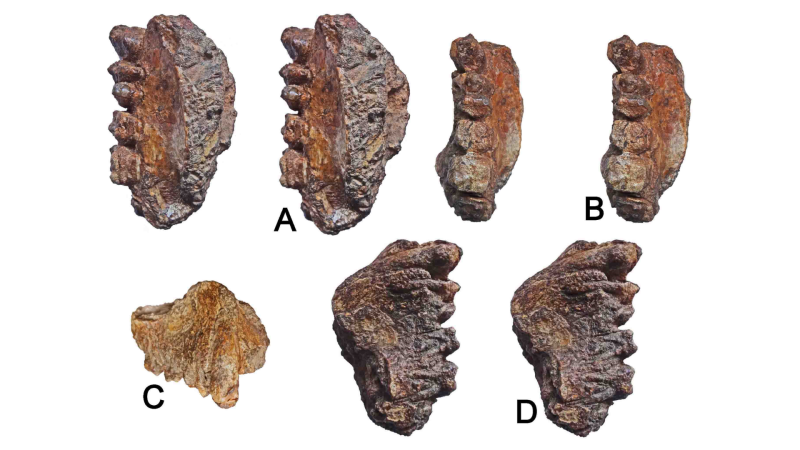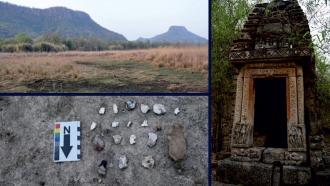
The story of human evolution takes a different twist with each new piece of fossil found. Palaeontologists trace the first human (or human-like) footsteps from the Olduvai Gorge in Tanzania. From there, the story of where our early ancestors set foot becomes a matter of in-depth discussion and debate. It is believed that about 14 million years ago, during the Miocene, ape-like species first originated on earth and gave rise to the present-day taxonomic family called Hominidae. This belief is supported by fossil remains recovered from Africa and beyond, including India, where at least four hominid families are found. Two of them belonged to the larger Indopithecus, and the other two to smaller Sivapithecus. Indopithecus fossils have been reported earlier from Hari Talyangar region of Himachal Pradesh, while those of Sivapithecus from Siwalik regions of India and Pakistan.
In a recent study, palaeontologists from India have discovered fossil evidence of a hominid species at Tapar in the Kutch basin of Gujarat. The study, published in the journal PLoS ONE, involved scientists from the Birbal Sahni Institute of Palaeosciences, Lucknow, Duke University, USA, Wadia Institute of Himalayan Geology, Dehradun, Indian Institute of Technology, Roorkee, and the Northeastern Ohio Medical University, USA. The Department of Science and Technology partially funded the study as an award of Fellowship to Dr. Ansuya Bhandari.
The study began in 2011 when researchers were in Kutch hunting fossils. Dr Ansuya Bhandari, Scientist at the Birbal Sahni Institute of Palaeosciences, stumbled upon something that looked like a fossilised upper jaw, or the Maxilla, of an ape-like individual. They later took this treasure to the lab and analysed it with X-Rays and computer-based tomography to learn more about it. About a thousand radiographic slices were used to reveal the internal details of the fossil.
The researchers then compared the pattern of the teeth of the fossil with those found earlier in the region. They concluded that the upper jaw was of an adult ape belonging to the genus Sivapithecus, and lived about 11-10.8 million years ago during the Miocene. The researchers could not precisely identify if the individual belonged to either S. sivapithecus or S. hysudricus species because of the poor condition of the fossil.
“Unfortunately, the specimen had much iron in it from being in iron-rich ancient soil. Hence, the radiations did not penetrate very far into the specimen”, said Dr Richard F. Kay and Blythe A. Williams from Duke University, who are also the authors of the study.
This discovery is exciting because fossil remains of Sivapithecus have so far been found only in four regions around the Siwalik Hills, a mountain range of the outer Himalayas stretching from the Indus to the Brahmaputra. This is the first-ever discovery of a Sivapithecus fossil outside the Siwaliks. “This is a landmark discovery which represents a significant southern range extension of Miocene hominoids in the Indian peninsula. It is the farthest south that it has been found. This finding, almost 1000 km south of Siwaliks has increased the geographic range of the genus,” says Dr Bhandari, who is also the corresponding author of the study. “This finding fills a time window of approximately 11 million years in the evolutionary history of future hominid remains in India”, she adds.
The researchers hope that this finding will draw more attention to the region and more such studies will be carried out in the future.
“Kutch is a paradise for fossils. Many associated mammal fossils belonging to the similar age have been discovered here. Such remains will help us understand in detail about the evolution of great apes and humans,” says Prof. Sunil Bajpai from IIT Roorkee, who is also an author of the study.






